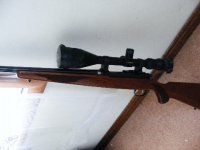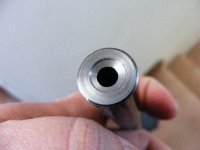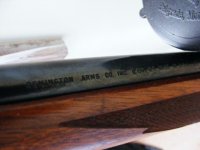Niccolo M.
Member
I have a very good customer who presented a Ruger 77/22 that “would not hold zero”. Before range testing this rifle I took it apart because there was a definite difference in the gap between the edges of the inletting along the stock forearm and the barrel. The bedding was casual even for a production rifle. It was further discovered that the barrel was not straight in the receiver. After further inspection it was discovered that the barrel tenon is a very casual fit in the receiver and the locking lugs on the bolt are not bearing evenly.
Has anyone on this forum threaded a Ruger 77/22 receiver to accept a threaded barrel ala 77/22 Hornet? Was the outcome worth the effort? I briefly considered boring the receiver and making a bushing to correct the fit of the factor barrel tenon (the tenon is in spec.). The fellow that owns this rifle has never balked at the cost of the work I’ve performed for him but requires that the performance of the finished rifle be the best that it can be and the labor cost to be fair. The price of a new barrel is a given along with the labor to thread and tune up the action. I mentioned that he would be ahead fiscally to purchase another rifle of different manufacture. This was rejected for now until it is determined that repairing this rifle would be way past penny wise and pound foolish.
Thanks,
Nic.
Has anyone on this forum threaded a Ruger 77/22 receiver to accept a threaded barrel ala 77/22 Hornet? Was the outcome worth the effort? I briefly considered boring the receiver and making a bushing to correct the fit of the factor barrel tenon (the tenon is in spec.). The fellow that owns this rifle has never balked at the cost of the work I’ve performed for him but requires that the performance of the finished rifle be the best that it can be and the labor cost to be fair. The price of a new barrel is a given along with the labor to thread and tune up the action. I mentioned that he would be ahead fiscally to purchase another rifle of different manufacture. This was rejected for now until it is determined that repairing this rifle would be way past penny wise and pound foolish.
Thanks,
Nic.




